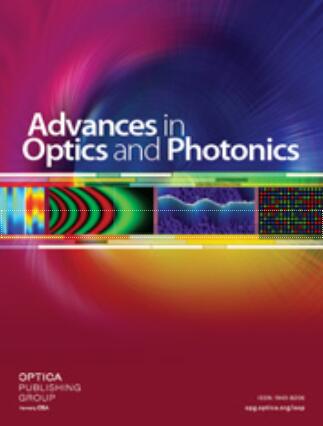Toward ultimate efficiency: progress and prospects on planar and 3D nanostructured nonpolar and semipolar InGaN light-emitting diodes
IF 23.8
1区 物理与天体物理
Q1 OPTICS
引用次数: 85
Abstract
Nonpolar and semipolar III-nitride-based blue and green light-emitting diodes (LEDs) have been extensively investigated as potential replacements for current polar c-plane LEDs. High-power and low-efficiency-droop blue LEDs have been demonstrated on nonpolar and semipolar planes III-nitride due to the advantages of eliminated or reduced polarization-related electric field and homoepitaxial growth. Semipolar (202¯1) and (202¯1¯) LEDs have contributed to bridging “green gap” (low efficiency in green spectral region) by incorporating high indium compositions, reducing polarization effects, and suppressing defects. Other properties, such as low thermal droop, narrow spectral linewidth, small wavelength shift, and polarized emission, have also been reported for nonpolar and semipolar LEDs. In this paper we review the theoretical background, device performance, material properties, and physical mechanisms for nonpolar and semipolar III-nitride semiconductors and associated blue and green LEDs. The latest progress on topics including efficiency droop, thermal droop, green-gap, and three-dimensional nanostructures is detailed. Future challenges, potential solutions, and applications will also be covered.迈向终极效率:平面和三维纳米结构非极性和半极性InGaN发光二极管的进展与展望
非极性和半极性iii -氮化物基蓝色和绿色发光二极管(led)作为当前极性c平面led的潜在替代品已被广泛研究。由于消除或减少极化相关电场和同外延生长的优点,高功率和低效率的下垂蓝色led已经在非极性和半极性iii -氮化物平面上得到了证明。半极性(202¯1)和(202¯1)led通过结合高铟成分,减少极化效应和抑制缺陷,有助于弥合“绿色差距”(绿色光谱区域的低效率)。非极性和半极性led的其他特性,如低热下垂、窄谱线宽度、小波长位移和偏振发射,也被报道过。本文综述了非极性和半极性iii -氮化物半导体及其相关蓝绿led的理论背景、器件性能、材料特性和物理机制。详细介绍了效率下降、热下降、绿隙和三维纳米结构等方面的最新进展。还将讨论未来的挑战、潜在的解决方案和应用程序。
本文章由计算机程序翻译,如有差异,请以英文原文为准。
求助全文
约1分钟内获得全文
求助全文
来源期刊

Advances in Optics and Photonics
OPTICS-
CiteScore
56.60
自引率
0.00%
发文量
13
期刊介绍:
Advances in Optics and Photonics (AOP) is an all-electronic journal that publishes comprehensive review articles and multimedia tutorials. It is suitable for students, researchers, faculty, business professionals, and engineers interested in optics and photonics. The content of the journal covers advancements in these fields, ranging from fundamental science to engineering applications.
The journal aims to capture the most significant developments in optics and photonics. It achieves this through long review articles and comprehensive tutorials written by prominent and respected authors who are at the forefront of their fields.
The journal goes beyond traditional text-based articles by enhancing the content with multimedia elements, such as animation and video. This multimedia approach helps to enhance the understanding and visualization of complex concepts.
AOP offers dedicated article preparation and peer-review support to assist authors throughout the publication process. This support ensures that the articles meet the journal's standards and are well-received by readers.
Additionally, AOP welcomes comments on published review articles, encouraging further discussions and insights from the scientific community.
In summary, Advances in Optics and Photonics is a comprehensive journal that provides authoritative and accessible content on advancements in optics and photonics. With its diverse range of articles, multimedia enhancements, and dedicated support, AOP serves as a valuable resource for professionals and researchers in these fields.
 求助内容:
求助内容: 应助结果提醒方式:
应助结果提醒方式:


